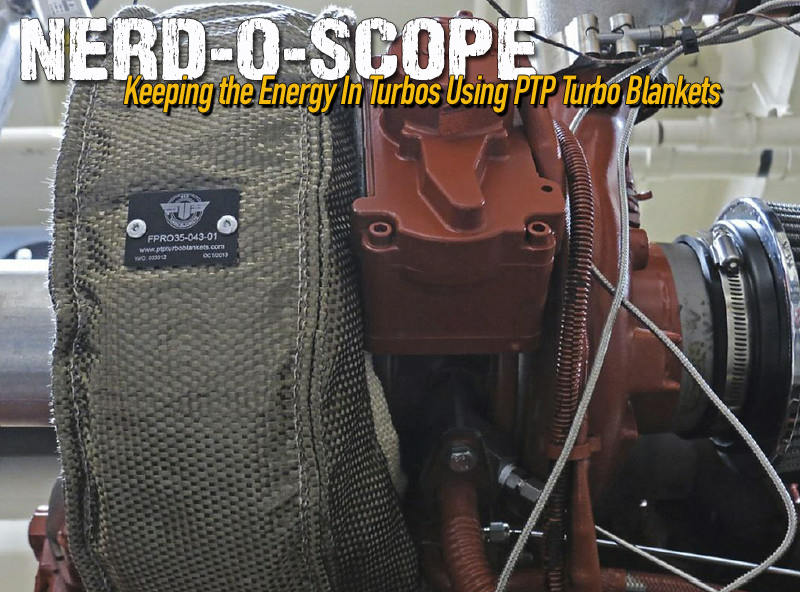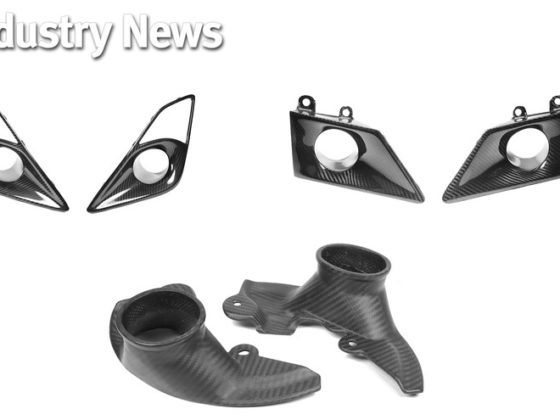
Nerd-O-Scope: Keeping the Energy In Turbos Using PTP Turbo Blankets
Khiem Dinh is an engineer for Honeywell Turbo Technologies at the time of this writing. All statements and opinions expressed by Khiem Dinh are solely those of Khiem Dinh and not reflective of Honeywell Turbo Technologies.
PTP Turbo Blankets is located in Austin, Texas. There also happens to be a huge university there. A UT grad student, Steffen Bickle, who used to work for a turbocharger company, was looking for a thesis project and found out about PTP Turbo Blankets. He thought that turbo insulation should work but could find no technical papers on it so he asked his advisor (Dr. Ronald Matthews – Yeah, THAT Dr. Matthews who founded Formula SAE and nursed it through its first 4 years) if he also thought this would be a useful project, and Prof. Matthews agreed that it would be. I am going to present the information in an abbreviated manner along with a bit of my own analysis, but you can read the full paper with all the gritty details of the experimental setup and data analysis at the link below.
https://docs.google.com/file/d/0B1DKgBxqE0JEME5wQ1pIc1N5dU0/edit?pli=1


You old-timer readers should recognize this diagram and the equation for turbine power. T3 is the temperature of the exhaust gas going into the turbine. Looking at the equation for turbine power, it is very easy to see that increasing the temperature of the exhaust gas going into the turbine wheel increases the power the turbine is able to generate. How does the PTP turbo blanket increase the temperature of the exhaust gas going into the turbine wheel? The insulation properties of the blanket prevent heat from escaping through the turbine housing and out to the ambient atmosphere. Therefore, heat that would have escaped previously now goes through the turbine wheel in the form of hotter exhaust gas.
 This picture shows the location of a few of the thermocouples installed on the turbocharger. The engine is a 6.7L diesel.
This picture shows the location of a few of the thermocouples installed on the turbocharger. The engine is a 6.7L diesel.The temperatures were measured at an engine speed of 2250 rpm and 271 N-m (200 lb-ft) of torque. This engine is probably good for over 600 lb-ft of torque, so this operating point is relatively low load as the SuperFlow engine dyno had limited torque capacity at low rpm (big diesels operate exclusively at low RPM). The low load is evidenced by the relatively low exhaust gas temperature of 535 deg C. At full load, you would expect to see the temperatures in the mid-700 deg C range for a diesel engine.

T3 is the temperature of the exhaust gas at the inlet of the turbine housing. T4 is the temperature of the exhaust gas leaving the turbine wheel. There are some interesting trends going on. With the turbo blanket (TB) on the turbine housing, it is quite obvious the surface temperature is significantly higher than without the turbo blanket (No TB) at all three locations. As you can see, a whole lot of heat is being lost without the turbo blanket installed. One of the primary heat transfer methods at these temperatures is due to radiation. It appears natural convection is also playing a large role. Notice the surface temperature at the top is hotter than on the side. With natural convection, you get more heat transfer off of vertical surfaces than horizontal surfaces (also why heat sink fins such as used on electronics are always vertical), so it makes sense the measurement at surf-side on a vertical surface shows a lower temperature than surf-top which has natural convection off basically a horizontal surface. As for exit-surf measurement without the blanket installed, that location is within a sunken cavity acting as a bit of an oven keeping more heat in. With the PTP turbo blanket installed, note how the surface temperatures are very close to the exhaust gas exit temperature. This shows the blanket is doing an excellent job of insulating and keeping the heat in the turbine housing.


